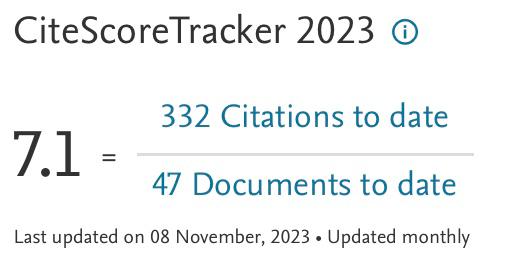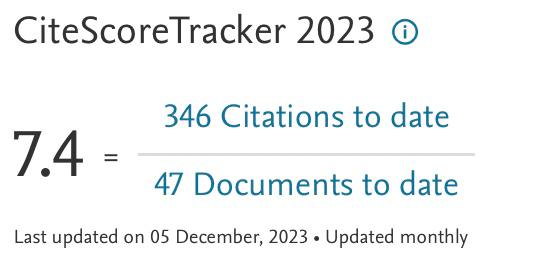Modelling of the Flame Synthesis of Single-walled Carbon Nanotubes in Non-premixed Flames with Aerosol Catalyst
DOI:
https://doi.org/10.37934/arnht.13.1.3951Keywords:
Flame synthesis, Single-walled carbon nanotube (SWCNT), Discrete particle modelling (DPM), Multi-scale modelAbstract
The use of aerosol catalyst in the flame synthesis of carbon nanotube (CNT) is known to yield single-walled CNT (SWCNT) that is useful for various applications. Modelling works are needed to optimize operating conditions for SWCNT growth but are unavailable. Therefore, a baseline model for the aerosol-catalyst system in flames is developed and the effect of oxygen on SWCNT growth is investigated. A baseline flame model for a normal diffusion flame with 24% oxygen concentration at the inlet is established via Computational Fluid Dynamic simulation. A dispersed phase model (DPM) is employed to simulate the entrainment of catalyst particles. The flame model is coupled with a published CNT growth rate model to predict the CNT growth rate at each particle. Inlet oxygen concentration is varied from 19% to 27% to study the effect of oxygen on SWCNT growth. Satisfactory validation of the baseline flame shape and temperature is established. Results show that particle 3 for the baseline case yields the highest CNT length compared to other particles due to the suitable path for the synthesis. The particles are classified based on the shortest time residence, moderate and longest time residence. Increasing oxygen concentration from 19% to 27% results in a 30% decrease in CNT length for particle 3 for each inlet condition due to lower carbon precursor and composition in the flame. Furthermore, the results showed that regardless of burner operating conditions, high SWCNT growth is consistently predicted between 120-140 mm HAB, which indicates the existence of an optimum range of species concentration for SWCNT growth in aerosol-based flame synthesis. Thus, it can be inferred that SWCNT growth in the aerosol–based method is highly dependent on carbon source and moderately dependent on temperature
Downloads
References
Iijima, Sumio. "Helical microtubules of graphitic carbon." Nature 354, no. 6348 (1991): 56-58. https://doi.org/10.1038/354056a0
Kroto, Harold W., James R. Heath, Sean C. O'Brien, Robert F. Curl, and Richard E. Smalley. "C60: Buckminsterfullerene." Nature 318, no. 6042 (1985): 162-163. https://doi.org/10.1038/318162a0
Zainal, Muhammad Thalhah. "Modelling the flame synthesis of carbon nanotube (cnt) in inverse diffusion flame." Master's thesis, Universiti Teknologi Malaysia (2017).
Hamzah, N., M. F. Mohd Yasin, M. Z. Mohd Yusop, A. Saat, and N. A. Mohd Subha. "Rapid production of carbon nanotubes: A review on advancement in growth control and morphology manipulations of flame synthesis." Journal of Materials Chemistry A 5, no. 48 (2017): 25144-25170. https://doi.org/10.1039/C7TA08668G
Okada, Shohei, Hisashi Sugime, Kei Hasegawa, Toshio Osawa, Shohei Kataoka, Hiroki Sugiura, and Suguru Noda. "Flame-assisted chemical vapor deposition for continuous gas-phase synthesis of 1-nm-diameter single-wall carbon nanotubes." Carbon 138 (2018): 1-7. https://doi.org/10.1016/j.carbon.2018.05.060
Diener, Michael D., Noah Nichelson, and John M. Alford. "Synthesis of single-walled carbon nanotubes in flames." The Journal of Physical Chemistry B 104, no. 41 (2000): 9615-9620. https://doi.org/10.1021/jp001233f
Vander Wal, Randall L., and Lee J. Hall. "Ferrocene as a precursor reagent for metal-catalyzed carbon nanotubes: competing effects." Combustion and Flame 130, no. 1-2 (2002): 27-36. https://doi.org/10.1016/S0010-2180(02)00358-9
Unrau, Chad J., Richard L. Axelbaum, and Phil Fraundorf. "Single-walled carbon nanotube formation on iron oxide catalysts in diffusion flames." Journal of Nanoparticle Research 12 (2010): 2125-2133. https://doi.org/10.1007/s11051-009-9771-2
Vander Wal, Randy L., Gordon M. Berger, and Lee J. Hall. "Single-walled carbon nanotube synthesis via a multi-stage flame configuration." The Journal of Physical Chemistry B 106, no. 14 (2002): 3564-3567. https://doi.org/10.1021/jp012844q
Endo, Hajime, Kazunori Kuwana, Kozo Saito, Dali Qian, Rodney Andrews, and Eric A. Grulke. "CFD prediction of carbon nanotube production rate in a CVD reactor." Chemical Physics Letters 387, no. 4-6 (2004): 307-311. https://doi.org/10.1016/j.cplett.2004.01.124
Wen, John Z., Matthew Celnik, Henning Richter, Meri Treska, John B. Vander Sande, and Markus Kraft. "Modelling study of single walled carbon nanotube formation in a premixed flame." Journal of Materials Chemistry 18, no. 13 (2008): 1582-1591. https://doi.org/10.1039/b717256g
Unrau, C. J., V. R. Katta, and R. L. Axelbaum. "Characterization of diffusion flames for synthesis of single-walled carbon nanotubes." Combustion and Flame 157, no. 9 (2010): 1643-1648. https://doi.org/10.1016/j.combustflame.2010.05.005
Naha, Sayangdev, Swarnendu Sen, Anindya K. De, and Ishwar K. Puri. "A detailed model for the flame synthesis of carbon nanotubes and nanofibers." Proceedings of the Combustion Institute 31, no. 2 (2007): 1821-1829. https://doi.org/10.1016/j.proci.2006.07.224
Unrau, C. J., R. L. Axelbaum, P. Biswas, and P. Fraundorf. "Synthesis of single-walled carbon nanotubes in oxy-fuel inverse diffusion flames with online diagnostics." Proceedings of the Combustion Institute 31, no. 2 (2007): 1865-1872. https://doi.org/10.1016/j.proci.2006.08.009
Hou, Shuhn-Shyurng, Wei-Cheng Huang, and Ta-Hui Lin. "Flame synthesis of carbon nanostructures using mixed fuel in oxygen-enriched environment." Journal of Nanoparticle Research 14 (2012): 1-11. https://doi.org/10.1007/s11051-012-1243-4
Hou, Shuhn-Shyurng, De-Hua Chung, and Ta-Hui Lin. "High-yield synthesis of carbon nano-onions in counterflow diffusion flames." Carbon 47, no. 4 (2009): 938-947. https://doi.org/10.1016/j.carbon.2008.11.054
Hamzah, Norikhwan, Mohd Fairus Mohd Yasin, Mohd Zamri Mohd Yusop, Muhammad Aniq Shazni Mohammad Haniff, Mohd Faizal Hasan, Khairul Fikri Tamrin, and Nurul Adilla Mohd Subha. "Effect of fuel and oxygen concentration toward catalyst encapsulation in water-assisted flame synthesis of carbon nanotubes." Combustion and Flame 220 (2020): 272-287. https://doi.org/10.1016/j.combustflame.2020.07.007
Hamzah, N., M. F. Mohd Yasin, M. Z. Mohd Yusop, A. Saat, and N. A. Mohd Subha. "Growth region characterization of carbon nanotubes synthesis in heterogeneous flame environment with wire-based macro-image analysis." Diamond and Related Materials 99 (2019): 107500. https://doi.org/10.1016/j.diamond.2019.107500
Zainal, Muhammad Thalhah, Mohd Fairus Mohd Yasin, Muhammad Abid Ira Irawan, Muhammad Faizullizam Roslan, Norikhwan Hamzah, and Mohd Zamri Mohd Yusop. "Investigation on the deactivation of cobalt and iron catalysts in catalytic growth of carbon nanotube using a growth rate model." Journal of Advanced Research in Materials Science 51, no. 1 (2018): 11-22.
Zainal, M. T., MF Mohd Yasin, and M. Abdul Wahid. "Investigation of the coupled effects of temperature and partial pressure on catalytic growth of carbon nanotubes using a modified growth rate model." Materials Research Express 3, no. 10 (2016): 105040. https://doi.org/10.1088/2053-1591/3/10/105040


























